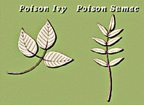|
||
Grow Lovely, Delicious Tomatoes and PeppersDig in ash to avoid the plight of blossom-end rotMost gardeners plant a few tomatoes for the kitchen table. Generally the first tomatoes harvested are attractive and delicious. But, as the season progresses, the quality decreases and many develop ugly black blotches at the blossom of the fruit. This is blossom-end rot. As the fault is generally calcium deficiency in the soil, it can be easily corrected by spreading wood ash or dolomitic lime in your garden. Dig them deeply into the area where tomatoes and peppers are to be grown. If you have not been adding wood ashes or lime to your garden regularly, you can still grow luscious tomatoes and peppers this year. Dig a hole some three feet in diameter and 18 inches deep; mixing the soil thoroughly with one-third by volume of compost, one cup of dolomitic limestone and 1 cup of gypsum. Dig the mixture back into the hole and plant your tomato and pepper plants in the middle. After the tomato and pepper plants start growing, spread about two heaping tablespoons of 10-10-10 fertilizer or six heaping tablespoons of bone meal in a 12-inch circle around the base of each plant and cultivate into the soil. Blossom-end-rot can also be caused by improper watering. If your garden does not receive an inch of rain each week, you need to irrigate. Irrigate using a lawn sprinkler and a tuna fish can. Operate the sprinkler until the tuna fish can is full to get the equivalent of one-acre-inch of water. The worse method for irrigating a garden is with a garden hose and hand-held nozzle — unless you are planning on drinking a few beers while sitting in a very relaxing chair. Frogs Can’t Catch Poison Ivy or SumacQ I have poison sumac growing around my fishpond. What is the best way to get rid of this stuff? I’m concerned about using poison due to the fact that it could harm the frogs in the pond. —Holly Richardson, Pasadena A Are you certain you have poison sumac? Most of the sumac that grows around here is smo I have seen poison sumac only once in my life, and that was in the middle of a swamp where it naturally grows. Poison sumac has seven leaves with a very upright fuzzy stem and grows five to seven feet high. More likely it’s poison ivy, which has three leaves. You can’t kill poison ivy until early July. (Read more about that later.) Frogs, however, are not bothered by poison ivy or poison sumac because of the slime that covers their bodies. Ask Dr. Gouin your questions at [email protected]. All questions will appear in Bay Weekly. Please include your name and address. |
||
|
|
||
|
© COPYRIGHT 2004 by New Bay Enterprises, Inc. All rights reserved.
|




 oth sumac, winged sumac and staghorn sumac. None of them is poisonous.
oth sumac, winged sumac and staghorn sumac. None of them is poisonous.